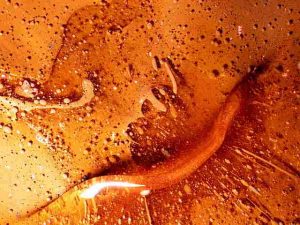Food & Wine Pairing, How to Nail It

Course-by-course wine pairings are a common feature at high-end restaurants. Though they may be challenging to coordinate without a sommelier, with a few tips and an understanding of wine you too can nail the wonderful food and wine pairing experience.
Learning the fundamentals of food and wine pairing is a great skill to have and will level up your next dinner party. Just follow the instructions in this guide. Additionally, you’ll discover what food should pair well with wine.
An excellent food and wine combination balances a dish’s elements and complements the best qualities in a wine. But despite the complexity of food and wine pairing, the fundamentals are easy to understand.
Let’s get started.
Tips for Pairing Food and Wine
The tips in the following paragraphs will help you start making great food and wine matches.
#1. Determine the basic tastes in wine
Today, we know that there are more than 20 different tastes in food, ranging from the fundamentals like sweet, sour, and fat to the extremes like hot, umami, and electrifying. Fortunately, when matching food and wine, you only need to pay attention to the following 6 tastes: salt, acid, sweet, bitter, fat, and spice (Piquant). These are some of the crucial things you should consider:
- Acidity is higher in white, rosé, and sparkling wines.
- There is more sweetness in sweet wines.
- Red wine has a stronger, bitter flavour.
#2. Consider basic taste in food
Reduce a meal to its essential, prominent flavours. For instance, the two main ingredients in baked macaroni are salt and fat. A little more complicated, southern barbecue combines fat, salt, sweet, and spice (plus a little acid!). Even vegetarian foods can be made simpler. For instance, creamed corn delivers fatness and sweetness, while a green salad offers acidity and bitterness.
#3. Congruent vs. contrasting pairings
By enhancing shared flavours, a congruent pairing achieves the perfect balance. By contrasting tastes and flavours, a contrasting pairing generates a wonderful pairing. You must decide which one you want to select.
#4. Check the intensity of food
Is the food extremely rich or extremely light? A salad may seem lighter but could have a high-acid balsamic vinaigrette dressing. Just concentrate on the potency of each taste component if the dish’s strength isn’t immediately apparent (acidity, fat, sweetness, etc.).
#5. Consider wine intensity as well
Is the wine bold or light? Here are a few illustrations of some of the most prominent wines:
- For red wine, Pinot Noir is lighter in body and doesn’t have a lot of tannins.
- Although Sauvignon Blanc is light-bodied, its acidity is higher.
- Chardonnay is generally less acidic and has more body.
- Cabernet Sauvignon has higher tannin and a fuller body (more bitterness).
#6. Match with weight
Whether referring to salads or stews, you can inherently tell how much food is in each. A salad with mixed greens is lighter than one with feta cheese, roasted peppers, and olives, which is heartier. Roast chicken is heavier than grilled chicken breasts. The calories, fat content, sauce, and dressing all (literally) weigh something.
Additionally, wine can be weighed out. Rich foods go well with heavy wines, whereas light dishes go better with light wines.
#7. Pairings based on occasions
Wedding cake and Brut Champagne don’t go well together, but this special day demands celebration wine. Even though a Moscato is an ideal match, nobody wants to drink it on the most significant day of their lives! A more cost-effective Cava or Prosecco will get the same result without breaking the budget and be a better match for wine than Champagne.
#8. Try experimenting
Food and wine trends are ever-evolving, so don’t be afraid to experiment with low-sulfite wines or wines made from grapes. If you share the experience with your guests, trying something new might be fun for you both. You may take more risks once you learn to trust your palate. Higher gains come with bigger risks!
Wrap Up
Everyone’s palate is different, so food and wine pairing choices may be individual. Either way, wine and food are splendid partners. Each enhances the other’s flavours, but pairing them the right way is crucial.
You can try pairing them based on the weight, contrasting them, complimenting the flavours, and more. This article aims to help you create a wonderful food and wine pairing that you can enjoy without being a wine expert.







